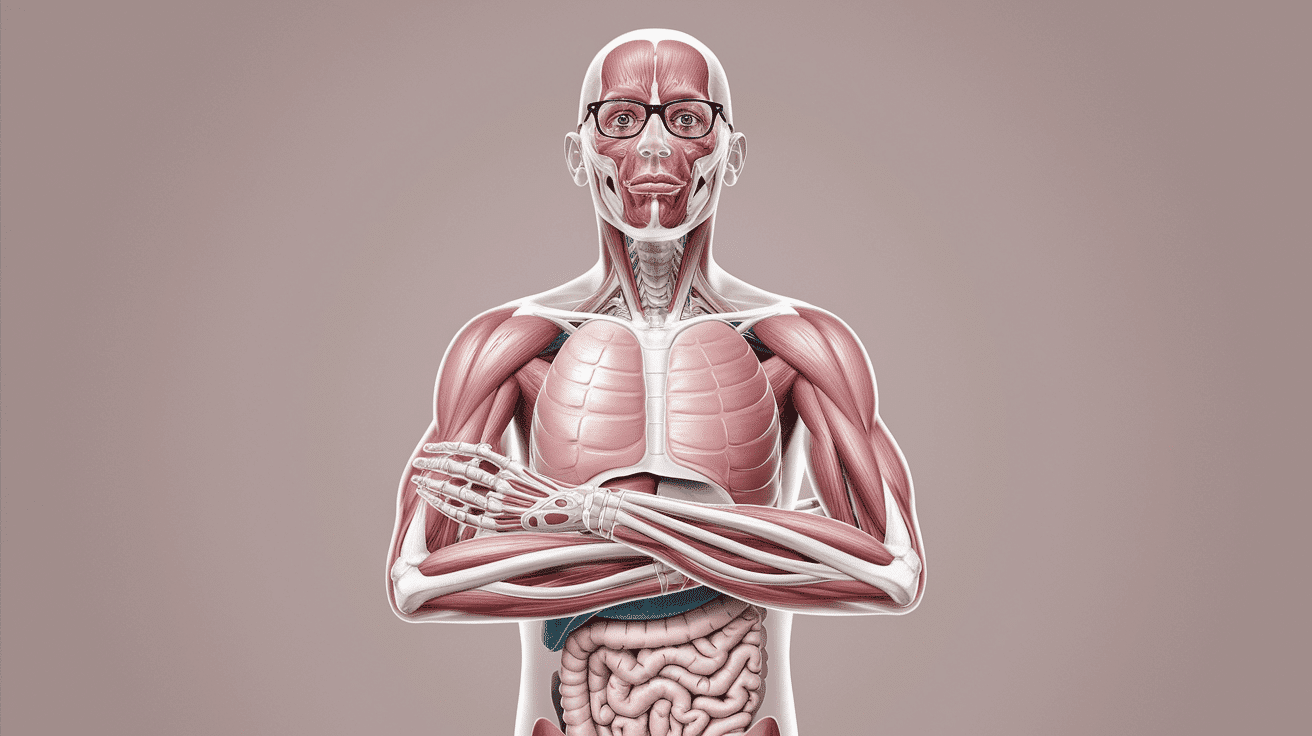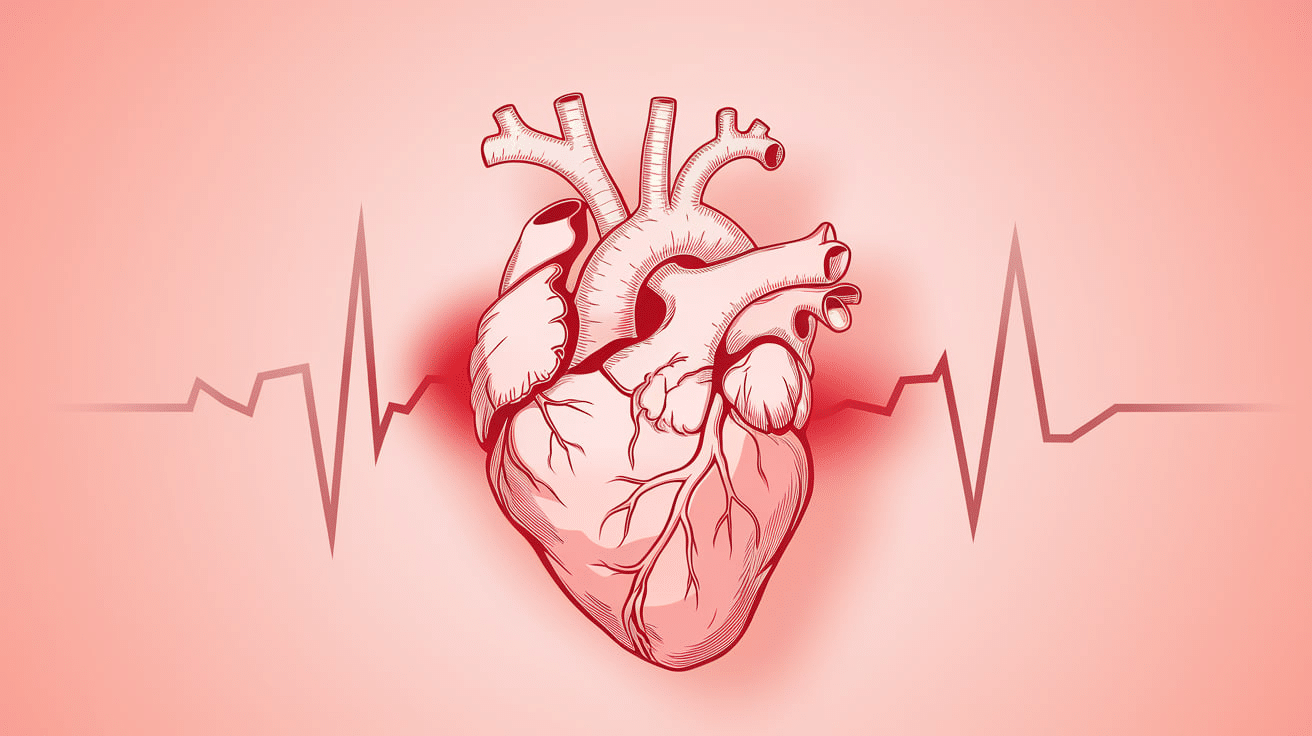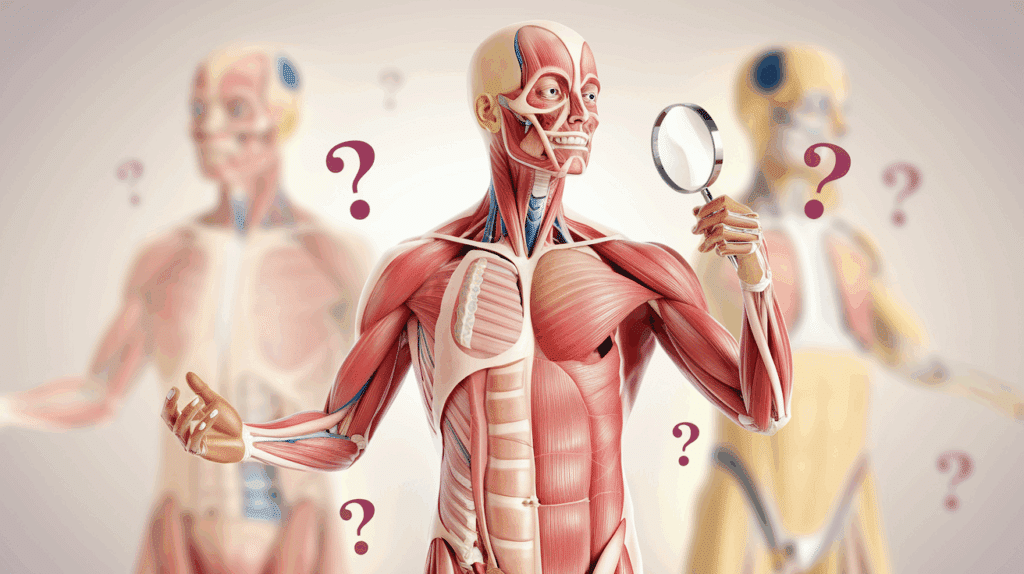Human bodies contain over 200 bones and 600 muscles, yet most people can name only a handful of each.
It’s frustrating when basic body facts slip from memory. What was that bone called again? Where exactly is the pancreas?
This lack of knowledge can leave anyone feeling lost during health conversations or when trying to understand personal medical issues.
This collection of anatomy trivia questions makes learning about the body fun and memorable. These questions cover everything from basic structures to eye-opening facts about how the body works.
Perfect for students, healthcare professionals, or anyone curious about human anatomy, this quiz turns complex information into bite-sized, easy-to-remember facts that stick in your mind long after reading.
Understanding Anatomy: The Science of the Human Body
Anatomy is the study of how the human body is put together. It examines all parts, big and small, from bones and muscles to tiny cells.
This field helps us learn what each body part does and how it works together.
When doctors study anatomy, they look at body systems like the heart that pumps blood, lungs that help us breathe, and the brain that controls everything. They also examine how bones connect and how muscles move us around.
Knowing anatomy helps medical students become good doctors. It also helps scientists create new treatments. For the rest of us, understanding our bodies can help us make better health choices in our daily lives.
Head to Toe: Body Breakdown Anatomy Trivia

From the intricate brain cells at the top to the tiniest toe bones at the bottom, the human body is a marvel worth exploring.
This section takes you through interesting questions about each body part and system. Ready to test your knowledge about what makes us human from head to toe?
1. What is the largest organ in the human body?
The skin
2. How many bones are in the adult human body?
206 bones
3. What is the smallest bone in the body?
The stapes in the ear
4. What part of the body controls balance?
The inner ear
5. Which organ is responsible for filtering blood?
The kidneys
6. What muscle is primarily responsible for breathing?
The diaphragm
7. What is the strongest muscle based on its size?
The masseter (jaw muscle)
8. Where is the femur located?
In the thigh
9. What is the main function of red blood cells?
To carry oxygen
10. What type of joint is the shoulder?
Ball-and-socket joint
11. What is the main function of white blood cells?
To fight infection
12. Which part of the brain controls voluntary movement?
The cerebrum
13. How many chambers does the heart have?
Four
14. What is the name of the body’s natural “shock absorber” between bones?
Cartilage
15. Which part of the eye controls the amount of light entering it?
The pupil
16. What is the name of the colored part of the eye?
The iris
17. Where is the ulna bone found?
In the forearm
18. Which part of the body contains the alveoli?
The lungs
19. What substance gives skin its pigment?
Melanin
20. Which body part contains the phalanges?
Fingers and toes
21. What is the function of the pancreas?
To regulate blood sugar
22. What organ produces bile?
The liver
23. Which part of the brain processes vision?
The occipital lobe
24. What’s the name of the tube that connects the throat to the stomach?
The esophagus
25. What part of the skeleton protects the brain?
The skull
26. How many ribs does the human body have?
24 (12 pairs)
27. What tissue connects muscles to bones?
Tendons
28. What tissue connects bones to other bones?
Ligaments
29. Which body part contains the tibia bone?
The lower leg
30. What is the outermost layer of skin called?
The epidermis
31. How many teeth does a typical adult human have?
32
32. What is the liquid part of blood called?
Plasma
33. Which body system includes the brain and spinal cord?
The nervous system
34. What is the purpose of the spleen?
To filter blood and fight germs
35. Which bone protects the heart and lungs?
The rib cage
36. What is the longest bone in the human body?
The femur
37. What part of the brain regulates temperature?
The hypothalamus
38. Which gland produces growth hormone?
The pituitary gland
39. What is the name of the bone in the upper arm?
The humerus
40. Which part of the body has the most sweat glands?
The soles of the feet
41. What is the name of the fluid in joints?
Synovial fluid
42. What part of the body has the most bones?
The hands
43. What is the function of the large intestine?
To absorb water and form waste
44. What is the body’s largest internal organ?
The liver
45. Which blood type is known as the universal donor?
O negative
46. What is the name of the lower jawbone?
The mandible
47. What organ is responsible for producing insulin?
The pancreas
48. What part of the eye allows us to focus?
The lens
49. How many vertebrae are in the human spine?
33
50. What is the name of the small sac that stores bile?
The gallbladder
51. Which organ system controls hormones?
The endocrine system
52. Where is the clavicle located?
In the shoulder (collarbone)
53. Which organ removes carbon dioxide from the blood?
The lungs
54. What part of the body helps maintain balance and coordination?
The cerebellum
55. What is the body’s natural painkiller called?
Endorphins
56. Which bone is commonly known as the kneecap?
The patella
57. Which body system is responsible for breaking down food?
The digestive system
58. Where is the sternum located?
In the chest
59. What is the name of the tube that carries urine from the kidney to the bladder?
The ureter
60. How many lobes are in the human brain?
Four
61. What is the term for a broken bone?
A fracture
62. Which blood vessels carry blood away from the heart?
Arteries
63. Which blood vessels carry blood to the heart?
Veins
64. What part of the ear helps with hearing vibrations?
The cochlea
65. What’s the name of the muscle that pumps blood through the body?
The heart
66. What part of the body helps regulate posture and coordination?
The spine
67. Which part of the digestive system absorbs most nutrients?
The small intestine
68. What is the name of the bone forming the forehead?
The frontal bone
69. What is the name of the clear outer layer of the eye?
The cornea
70. What are the tiny blood vessels that connect arteries and veins?
Capillaries
71. What is the name of the enzyme in saliva that starts digestion?
Amylase
72. Which organ is located in the lower right abdomen?
The appendix
73. What part of the body produces sound for speech?
The larynx (voice box)
Inside Out: Organs & Systems Quiz

Our bodies contain complex internal systems that work non-stop without us even noticing.
This section of anatomy trivia tests your knowledge about the hidden organs and networks that keep us alive. Can you name what pumps, filters, and processes everything from food to oxygen inside your body?
74. What system includes the heart and blood vessels?
The circulatory system
75. Which organ is primarily responsible for detoxifying chemicals?
The liver
76. What system controls body movement through electrical signals?
The nervous system
77. Which organ helps regulate blood pressure and fluid balance?
The kidneys
78. What part of the brain controls heartbeat and breathing?
The brainstem
79. Which organ produces bile to help digest fats?
The liver
80. What system is made up of skin, hair, and nails?
The integumentary system
81. What gland regulates metabolism?
The thyroid gland
82. Which part of the digestive system stores and compacts waste?
The rectum
83. What is the main function of the respiratory system?
To exchange oxygen and carbon dioxide
84. Which organ system includes bones and cartilage?
The skeletal system
85. What body system helps fight disease and infections?
The immune system
86. What organ is part of both the respiratory and digestive systems?
The pharynx
87. Which system allows the body to reproduce?
The reproductive system
88. What hormone is primarily responsible for growth?
Growth hormone
89. What is the function of the adrenal glands?
To produce stress-related hormones
90. Which part of the small intestine does most nutrient absorption occur?
The jejunum
91. What muscle contracts to move air into the lungs?
The diaphragm
92. Which system transports hormones through the bloodstream?
The endocrine system
93. What part of the brain is responsible for memory and learning?
The hippocampus
94. What organ plays a major role in digestion and also stores glucose?
The liver
95. What type of muscle makes up the heart?
Cardiac muscle
96. Which gland is often called the “master gland”?
The pituitary gland
97. Which organ helps maintain water balance by producing urine?
The kidneys
98. What is the main role of the lymphatic system?
To return fluid to the bloodstream and fight infection
99. What part of the brain controls emotions and behavior?
The amygdala
100. What system includes ovaries, testes, and related structures?
The reproductive system
101. Which organ contains villi for nutrient absorption?
The small intestine
102. What is the main function of the pancreas in the digestive system?
To produce digestive enzymes
103. Which organ connects the mouth to the stomach?
The esophagus
104. What does the spleen filter out of the blood?
Old or damaged red blood cells
105. What organ is responsible for vocal sound production?
The larynx
106. What part of the body contains the bronchial tubes?
The lungs
107. What is the role of the hypothalamus in the brain?
To regulate hunger, thirst, and temperature
108. Which organ has a cortex and medulla?
The kidney
109. What organ pumps blood throughout the body?
The heart
110. What body system regulates hormones and body processes?
The endocrine system
111. What organ is responsible for the mechanical and chemical breakdown of food?
The stomach
112. Which system controls reflex actions?
The nervous system
113. What does the gallbladder store?
Bile
114. What part of the body contains the trachea?
The throat/neck area
115. What system is responsible for removing waste from the blood?
The excretory system
116. Which part of the brain processes touch and spatial awareness?
The parietal lobe
117. What system transports nutrients and oxygen to cells?
The circulatory system
118. What is the function of the alveoli?
To exchange gases in the lungs
119. What is the name of the hormone that regulates sleep?
Melatonin
120. What organ lies behind the stomach and helps digest food?
The pancreas
121. What part of the nervous system controls involuntary actions?
The autonomic nervous system
122. What is the main role of the colon?
To absorb water and form stool
123. What does the endocrine system use to send messages?
Hormones
124. What organ helps with balance and posture?
The cerebellum
125. Which part of the digestive system follows the stomach?
The small intestine
126. What system includes the thymus and bone marrow?
The immune system
127. Which part of the brain is the largest and handles complex thinking?
The cerebrum
128. What is the function of the epiglottis?
To prevent food from entering the airway
129. What type of muscle lines internal organs?
Smooth muscle
130. What system is responsible for responding to external stimuli?
The nervous system
131. What organ controls the rate of breathing?
The medulla oblongata
132. What is the name of the flap that covers the windpipe during swallowing?
The epiglottis
133. What part of the kidney filters blood?
The nephron
134. Which gland produces melatonin?
The pineal gland
135. What organ contains gastric acid for digestion?
The stomach
136. What part of the male reproductive system produces sperm?
The testes
137. What is the name of the tube that carries urine out of the body?
The urethra
138. What organ helps regulate pH in the body?
The kidneys
139. What hormone is involved in the fight-or-flight response?
Adrenaline
Strange but True: Body Facts Trivia

The human body holds many odd and surprising secrets you might not expect. This section highlights the weird, unusual, and downright surprising facts about our bodies.
Did you know your stomach acid can dissolve metal? Or that your body produces enough saliva to fill two bathtubs in a lifetime? Let’s find more odd facts!
140. Which body part can continue to grow after death for a short time?
Hair (appears to, due to skin dehydration)
141. How many times does the average heart beat per day?
About 100,000 times
142. What is the only body part without a blood supply?
The cornea
143. How many smell receptors does the human nose have?
Around 6 million
144. Which muscle never gets tired?
The heart
145. What’s the fastest muscle in the human body?
The eye muscles
146. How much skin does the average person shed per year?
About 1 pound
147. What percentage of the body is water?
Roughly 60%
148. How many bacteria live in the human mouth?
Over 6 billion
149. What part of the body can detect one trillion different scents?
The nose
150. Which body part has no pain receptors?
The brain
151. How long is the average adult’s blood vessel network?
About 60,000 miles
152. What is the average body temperature in Celsius?
37°C
153. Can humans glow in the dark?
Yes, faintly (bioluminescence under UV)
154. How many taste buds does the average person have?
About 10,000
155. What part of the body has the fastest-growing tissue?
The hair
156. Which hand generally has stronger grip strength in right-handed people?
The dominant (right) hand
157. How much saliva does a person produce daily?
Around 1 to 2 liters
158. What color is a bruise when it starts healing?
Green or yellow
159. How many muscles are used to speak a single word?
Over 100
160. What can stomach acid dissolve?
Razor blades (theoretically)
161. What unique pattern does every person have besides fingerprints?
Tongue prints
162. What part of the body can stretch up to 50% when wet?
The skin
163. How strong is human bone compared to concrete?
Stronger by weight
164. How often does your stomach lining replace itself?
Every 3 to 4 days
165. Can humans survive without a stomach?
Yes, with adjustments
166. What part of the body contains its own electrical system?
The heart
167. How many sweat glands are in the human body?
2 to 4 million
168. Which organ can regenerate itself?
The liver
169. Which body part has more nerve endings than any other?
The fingertips
170. Can your body digest chewing gum?
No, it passes through intact
171. What happens if you hold in a sneeze?
It can cause internal damage
172. What percent of body heat escapes from your head?
Around 10% (not 80%, that’s a myth)
173. Can your heart skip a beat when you’re scared?
Yes, due to adrenaline
174. How fast can a sneeze travel?
Up to 100 mph
175. How many times do you blink per minute on average?
15 to 20 times
176. Can you break a rib from sneezing?
Yes, though it’s rare
177. Which part of the body heals the fastest?
The tongue
178. How much blood does the heart pump daily?
About 2,000 gallons
179. What is the smallest muscle in the body?
The stapedius (in the ear)
180. Can your heartbeat sync with music?
Yes, it can
181. How many scents can the nose remember?
Over 50,000
182. Can humans hear their own eyeballs move?
Yes, some people with superior canal dehiscence syndrome
183. Do bones weigh more than fat?
Yes
184. How long does it take food to digest fully?
24 to 72 hours
185. Can you tickle yourself?
No, the brain anticipates it
186. What part of the body changes color based on emotion?
The face (blushing)
187. What’s the loudest sound the body can produce?
A sneeze
188. Do fingernails grow faster on dominant hands?
Yes
189. Can people with blue eyes be more sensitive to light?
Yes
190. How much of your brain do you use?
Nearly all of it (not 10%)
191. What causes goosebumps?
Tiny muscles at hair follicles contracting
192. Can stress turn your hair gray?
Yes, over time
193. Are humans the only animals that cry from emotion?
Yes
194. Which part of the body stores emotional trauma?
Muscles and fascia (often debated in somatic therapy)
195. Can your body detect when someone is staring at you?
Yes, in some studies
196. What causes your stomach to “growl”?
Gas and fluid movement during digestion
197. Can the brain feel pain?
No
198. What gives urine its yellow color?
Urobilin
199. Can your bones shrink with age?
Yes, due to density loss
200. What happens to your body when you laugh?
Endorphins release, muscles relax
201. Can your eyes change color over time?
Rarely, but yes
202. What percentage of body weight is skin?
Around 16%
203. Do humans glow more during the day or night?
Day, but it’s still invisible
204. Can one eye cry and not the other?
Yes, due to tear duct blockage
205. Is it possible to live with only one lung?
Yes
206. How many times does the average person yawn per day?
Around 20 times
207. Do bones bleed?
Yes, they are vascular
208. What part of your body gets bigger when you’re cold?
Pupils (fingers can swell in some cases)
209. How many liters of blood are in the average adult?
About 5 liters
210. What causes hiccups?
Spasms of the diaphragm
211. Can your brain eat itself during starvation?
Yes, it breaks down its own cells
212. What is the only part of the body that can’t repair itself?
Teeth enamel
Wrapping It Up
Our body is truly a wonder, with countless parts working together to keep us alive and moving. This collection of anatomy trivia questions offers just a glimpse into this stimulating subject.
By testing your knowledge with these questions, you’ve taken a step toward better understanding your own body.
Even if you’re a student, a healthcare worker, or simply curious, knowing more about anatomy helps us make sense of how we function.
Remember that learning about the body isn’t just for medical professionals. It’s useful knowledge for everyone who wants to take better care of themselves.
What body facts surprised you the most? Share your favorite anatomy trivia in the comments below! And if you found these questions helpful, why not challenge a friend to see who knows more about the human body?















